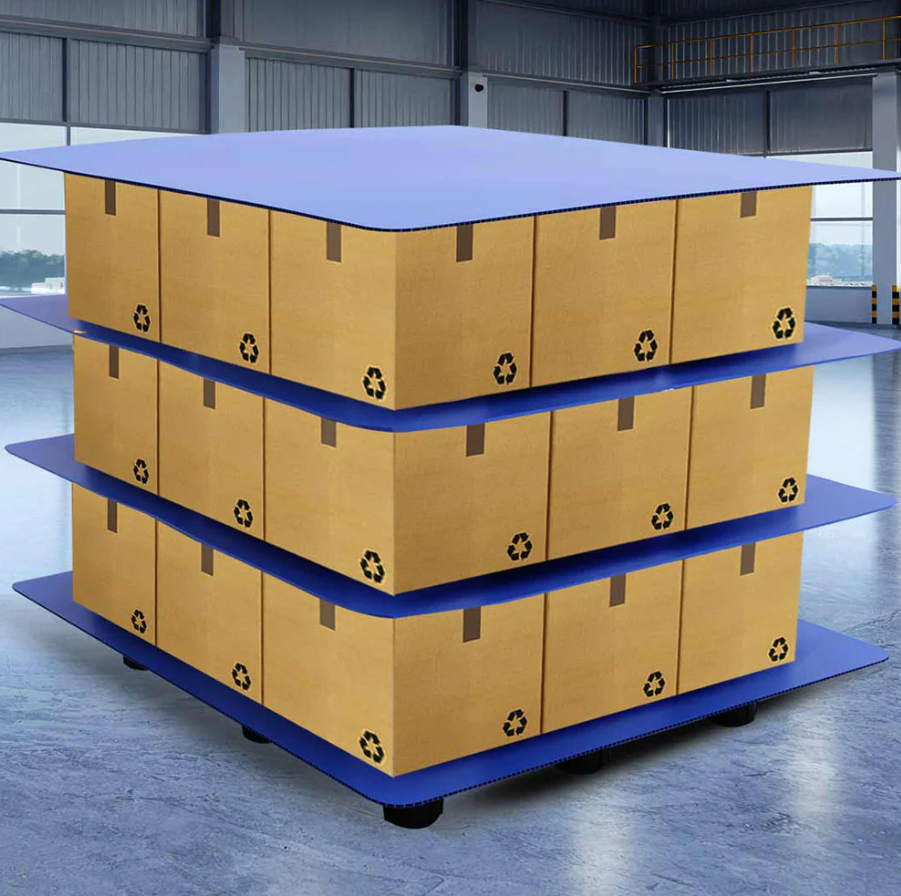
In today's fast-evolving world of logistics and supply chain management, efficiency and sustainability are no longer optional—they're essential. As companies seek smarter ways to transport goods while minimizing their environmental footprint, returnable pallets are gaining significant traction. These durable, reusable units are reshaping how businesses approach shipping and handling, and they’re rapidly becoming the standard in a wide range of industries.
What Is a Returnable Pallet?
A returnable pallet is a pallet designed for multiple uses throughout its life cycle, as opposed to single-use or disposable pallets. Constructed from robust materials like high-density plastic, metal, or durable engineered wood, returnable pallets are built to withstand repeated handling, storage, and transport.
Unlike traditional wooden pallets, which often end up in landfills after one or two uses, returnable pallets can circulate through the supply chain dozens or even hundreds of times. This quality makes them both cost-effective and eco-friendly over the long term.
Why the Shift Toward Reusability?
Several trends are driving the shift from one-way pallets to returnable pallet systems:
1. Sustainability Goals
Sustainability is no longer a buzzword—it's a business imperative. Many companies are setting carbon-reduction goals, and packaging plays a significant role in that equation. A returnable pallet reduces waste, decreases the need for raw materials, and often results in a smaller carbon footprint compared to traditional alternatives.
2. Cost Efficiency
While returnable pallets typically involve a higher upfront investment, their long-term value is undeniable. When used across a closed-loop system or reverse logistics model, businesses save money by avoiding repeated purchases of disposable pallets, reducing waste disposal costs, and minimizing damage to goods in transit.
3. Durability and Safety
Returnable pallets are designed to be more durable and structurally sound than their disposable counterparts. This added strength means better load stability, reduced risk of product damage, and fewer accidents in warehouses and during transport.
4. Automation Compatibility
As more warehouses adopt automation and robotic systems, the consistency of returnable pallets offers a distinct advantage. Uniform pallet dimensions, strength, and surface integrity are critical in automated environments, where even minor defects can lead to operational hiccups.
Common Applications of Returnable Pallets
Returnable pallets are being adopted across a wide range of industries, including:
Automotive: Transporting heavy components and assemblies that require robust, standardized handling.
Pharmaceuticals: Ensuring hygiene and traceability in highly regulated environments.
Food & Beverage: Supporting safe, clean transport of perishable items, particularly in cold chain logistics.
Retail and E-commerce: Facilitating quick turnaround in fast-moving, high-volume sectors.
Returnable Pallet Systems: Closed-Loop vs. Open-Loop
Returnable pallet usage often falls into two categories:
Closed-Loop Systems
These involve a known, recurring set of locations (like between a manufacturer and its distributor). In this setup, pallets are returned directly to the point of origin after delivery. Closed-loop systems maximize efficiency and control, making tracking and maintenance easier.
Open-Loop Systems
In contrast, open-loop systems circulate through different parties or external networks. This method can be more complex to manage and may involve third-party pallet pooling or rental services. Open-loop systems typically require robust tracking technologies such as RFID or barcode scanning.
Challenges and Considerations
While the advantages of returnable pallets are clear, companies need to weigh several factors before switching:
Initial Investment: The cost per unit is significantly higher than disposable pallets.
Logistics Planning: Efficient return logistics and storage management are essential for cost savings.
Tracking & Accountability: Returnable pallets need to be tracked to avoid loss, which may require implementing technology systems or working with specialized providers.
Storage Space: Businesses must plan for the space needed to store pallets while awaiting return transport.
Innovations and the Future of Returnable Pallets
As the demand for returnable pallets grows, innovations in design and materials are pushing the industry forward. Some notable developments include:
Smart Pallets: Embedded with IoT sensors or GPS trackers, these pallets offer real-time tracking and condition monitoring.
Modular Designs: Pallets with detachable parts that can be easily repaired or customized for specific goods.
Lightweight, High-Strength Materials: Advances in composite plastics and hybrid materials offer greater durability at lower weights, reducing fuel costs during shipping.
Moreover, the growth of circular economy models and sustainable packaging policies in government regulations is expected to further accelerate the adoption of returnable packaging systems, including pallets.
Final Thoughts
The returnable pallet is more than just a reusable platform—it's a strategic asset in modern supply chains. As businesses strive for greater sustainability, efficiency, and cost savings, these pallets offer a practical and impactful solution.
Though implementation requires thoughtful planning and coordination, the long-term benefits far outweigh the challenges. From reduced environmental impact to enhanced durability and cost savings, returnable pallets are well-positioned to become the backbone of future-ready logistics systems.
As companies continue to look for innovative ways to streamline operations while reducing their carbon footprint, returnable pallets are set to play a crucial role in shaping a smarter, cleaner, and more resilient supply chain.




















Write a comment ...